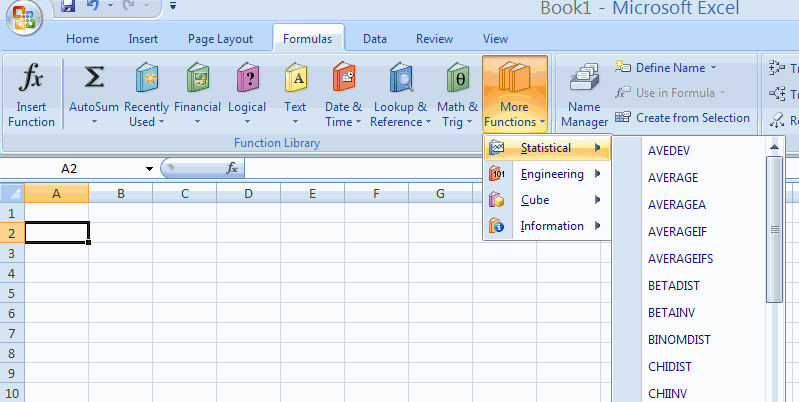

Normal Distribution shows how the data points are distributed and the means and shows the standard deviation in both sides of the mean. For formulas to show results, select them, press F2, and then press Enter. Normdist function in Excel is under the statistical category, which is used to calculate the Normal Distribution of any data on the basis of Mean and Standard Deviation.
Normal cdf excel pdf#
BNORMSDIST(x, y, r, cum) the cdf of the standard bivariate normal distribution at x and y with correlation coefficient r if cum TRUE and the pdf if cum FALSE. When cumulative = TRUE, the formula is the integral from negative infinity to x of the given formula.Ĭopy the example data in the following table, and paste it in cell A1 of a new Excel worksheet. Real Statistics Excel Functions: The Real Statistics Resource Pack provides the following functions in support of multivariate normal distributions. The equation for the normal density function (cumulative = FALSE) is: If mean = 0, standard_dev = 1, and cumulative = TRUE, NORMDIST returns the standard normal distribution, NORMSDIST. If standard_dev ≤ 0, NORMDIST returns the #NUM! error value. If mean or standard_dev is nonnumeric, NORMDIST returns the #VALUE! error value. If cumulative is TRUE, NORMDIST returns the cumulative distribution function if FALSE, it returns the probability mass function. A logical value that determines the form of the function. The standard deviation of the distribution.Ĭumulative Required. The value for which you want the distribution. Excel Google Sheets MongoDB Python R SAS SPSS Stata TI-84 Tools Calculators Critical Value Tables Glossary Posted on ApApby Zach Quick Normal CDF Calculator This calculator finds the area under. The NORMDIST function syntax has the following arguments: Although this function is still available for backward compatibility, you should consider using the new functions from now on, because this function may not be available in future versions of Excel.įor more information about the new function, see NORM.DIST function. In the end it's really pretty easy, but it seems like it shouldn't even be this many steps.Important: This function has been replaced with one or more new functions that may provide improved accuracy and whose names better reflect their usage. Paso 3: - Ahora calculemos la distribucin logartmica normal en Excel para. The rest was just standard Excel formatting stuff to limit the range, add axis labels and a legend, etc. La funcin de distribucin acumulada (CDF) es una variable de probabilidad. For the "optimized" data I used columns C and A. Notice how the X/Y values are columns B and A respectively. Here's what I used for the "original" data. Select the data for both columns and insert "X Y (Scatter)" chart, then edit the series. It's important to include the row/column as the second argument to CELL, or else the copy/paste won't work right. Put it in one cell, then copy it to the others. Real Statistics Excel Functions: The Real Statistics Resource Pack provides the following functions in support of multivariate normal distributions. One easy way to do that is using the CELL function as shown.
Normal cdf excel series#
For Y values, you need a simple series of fractions from zero to one.
/normdist-5722d8c15f9b58857d2549af.jpg)
Here's a picture of the spreadsheet to illustrate how I did it.Īs you can see, the first thing you'll need is a sorted column of data - either "original" or "optimized" above. What I wanted was an exact representation of the data I had just gathered, so I had to experiment a bit and I figured I'd share what I found with others.

There are some tutorials out there, but they mostly seem to be about using standard distribution functions to approximate the actual data. Unfortunately, this is not a type of chart that's well supported in most software, including Excel. I'll write more about that some day, if I'm allowed to. This was an unexpectedly good result for the experiment I was doing, by the way. See how the orange line diverges from the blue one and then starts to converge again, or how the orange results are heavily clustered on the left with relatively few outliers? That's all interesting information. In addition to showing the median and any percentile one mightwant, this conveys a lot of information that simple numbers can't. One of the most useful kinds of charts in my work is a Cumulative Distribution Function.


 0 kommentar(er)
0 kommentar(er)
